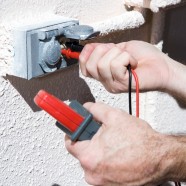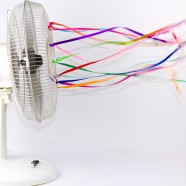6 Types of Power System Protection
Florida’s power systems are taxed more than most states because of the extraordinary amount of lightning that strikes the state each year. You don’t need bad weather to experience power fluctuations, though. Voltage can ebb and spike for multiple reasons, causing anything from mild annoyance to life-endangering problems. The aim of the electrical protection plan is to isolate and fix the problem while keeping as much of the system running as usual. Different problems call for different solutions, but they all work together to keep the power running as normally as possible.
Transformers
Electrical voltage may vary between the power station and your home or business, and transformers work to raise or lower the voltage to the desired rate. They’re the first defense against overloading and brownouts, making use of electromagnets to keep the power steady as it feeds into your building. The resulting power is easier for the relays and breakers in your home or business to deal with.
Protective Relays
Relays are the electrical protection mechanisms that sense an increase in the power supply and trip the circuit breakers. When the power surges too high it can create a fire hazard. Relays prevent that by breaking the circuit through the use of breakers. They’ll work continuously, tripping the same breaker over and over again until the cause of the surge or excess draw is corrected or removed.
Circuit Breakers
Circuit breakers are the workhorses of the power system protection group. Connected to a system of relays, when the power surges too high it will trip, cutting off the power and saving delicate electronics you own. Power won’t flow through an incomplete circuit, and the relays in a circuit breaker are the simplest types to use.
In older buildings there may be a fuse box that employs a system of fuses that burn out when the relay trips. These have to be replaced, though, making the circuit breaker switches a great improvement. Circuit breakers can be simple setups serving only one outlet, as in ground fault circuit interrupters (GFCI) or in a traditional circuit breaker box panel that controls a series of circuits throughout the building.
Back Up Power Supplies
For homes and businesses with one or two computers, a battery operated backup system can be the perfect solution to surges and power outages. These devices are a link between the computer and the wall outlet. If the power goes out a battery backup system instantly creates enough power to run the computer or appliance for about half an hour. This gives you time to shut the computer down properly without losing important data. It also acts as a buffer, preventing surges from damaging delicate data storage. Most of these backups have rechargeable batteries installed, and constantly recharge themselves from the outlet power.
Lightning Protection
All the back power in the world won’t handle a direct lightning strike on your building. Air terminals, what used to be called lightning rods, focus the lightning’s power away from the building and directs it into a grounded area outdoors. It’s a myth that air terminals attract lightning. What they do is to protect your property from any lightning that does happen to strike. You can install lightning protection on your home or business, and can even have specialty protection added to important landscape details such as tall trees and large shrubbery.
Generators
Backup generators don’t prevent a power surge or dip from happening, but when there is a loss of power they immediately start up, preventing the damage that sharp dips and rises in the power system can do to computers, stereo systems, medical devices, and other items that need a constant power source. When your business or your health depend on keeping a constant power supply, it’s crucial to install a reliable backup generator capable of putting out enough power to run critical systems in your building.
Read MoreEnergy Conservation Tips for Your South Florida Business
Going green may be trendy, but it’s also one of the best ways to lower energy costs for your south Florida business. The heat and humidity may mean that your air conditioning has to run all day long, but other energy conservation methods can make a big dent in the money you have to pay out at the end of the month.
Your Building
The environment in and around your building can have a big effect on how much energy you use each day. In south Florida, the biggest challenge is keeping the interior cool and less humid. The air conditioner is one of the most expensive appliances you can use, so anything you can do to reduce the amount of time it’s running will save you money.
Keep the hot sun from coming inside during the warmest parts of the day. This usually means covering the windows in some way. Window film darkens the glass and prevents the sun to heat the interior. It works exactly like shaded glass in a car, stopping the interior from heating up in the hot sun.
Landscaping can be a green addition to your property in more ways than one. Planting trees or tall shrubs in front of windows can shade the windows from the sun during the summer. Use evergreen trees or shrubs instead of deciduous types, since even the winter can be hot and humid during most of the year in south Florida. The landscaping can increase your building’s value as well as helping with energy conservation.
Your HVAC System
A system in good running condition is always less expensive to use, since it doesn’t have to work as hard to get the same results. Keep your HVAC system in great running order by getting a tuneup done early each spring. Create a maintenance agreement with your local contractor so that, in addition to the first-of-the-year tuneup, he’ll also maintain the system on regular visits throughout the year.
Change the filters in your system yourself. If you’re not sure where the filter is, your contractor can show you. Changing the filter is usually a matter of sliding one filter out and sliding a new one in place, which takes just a few seconds to finish. Since filters only cost a few dollars, this may be the most cost-effective step you can take in terms of energy conservation.
A New Business
If you’re designing and planning a new business, you have the advantage of using green building methods from the start. You’ll be able to keep energy costs low by adding conservation goals into your project and adding low-energy products in every part of the business.
Lighting is one of the biggest users of electrical power, and the wrong kind of lighting can be the biggest waste of energy in your business. Newer LED lighting can save significant amounts of power over the year. Not just for desk lamps, you can use LED bulbs in every part of your lighting scheme.
- LED lights in parking lots give a more even coverage over the entire lot
- Task lighting over work desks give more light while using less energy
- Landscape lighting can be a design as well as safety feature, and can run on pennies a day
Choose the equipment in your new business with an eye toward energy conservation. Pick laptops over desktop computers. Look for an EnergyStar rating for kitchen appliances. Add power strips so you can turn off banks of appliances with one flick of a switch. Build fans into the ceiling to reduce the amount of air conditioning needed. Add windows with tinted glass, and reduce the size of the windows in the building.
Need more information on how to keep your business premises cool in summer? Contact us now.
Read MorePurpose and Value of Dedicated Electrical Circuits in Business
Running your business on one complete line is something like making a stew: all the components are mixed together, even if you want to treat one part in a special way. Business owners have been installing dedicated electrical circuits for as long as they’ve been relying on computers for their business needs. As computer technology has improved, so has electrical systems installed into businesses. Any kind of machinery that uses large amounts of power can benefit from a dedicated circuit, but they’re most common for computers and their components.
What a Dedicated Circuit Does
All the wiring in a building usually run together, meeting up at the circuit breaker box. This means the breakers service all electrical usage in the building equally. A dedicated circuit is a separate set of wires and a separate breaker box that only service one particular piece of equipment, most usually a computer or group of computers. This method of wiring insulates the computers in the building from every other piece of equipment, giving you a certain amount of electrical protection. Power fluctuations and overloaded circuits in one system don’t necessarily impact the other one, and electrical repairs are simpler to do because of the minimal amount of wiring to be dealt with.
Benefits of a Dedicated Circuit for Electrical Protection
The main reason for installing a dedicated circuit into your computer area is for electrical protection. Computers are more likely to be damaged by problems with the electrical system, so it’s smart to isolate them into one protected area. Some of the beneficial results of this installation are:
- Higher productivity. Computers will be up and working with fewer glitches and less down time
- Reduced electrical noise. When computers are on general circuits, the simple act of plugging in a vacuum cleaner or turning on a fan can cause fluctuations in the flow of electricity. With a dedicated circuit, you’ll avoid the possibility of these problems
- Reduced risk of electrical fires. Circuits that glitch out can spark and cause fires. Having less power running through each system reduces your fire risk throughout your business. This electrical protection goes for walk-in refrigerators, large air conditioners, oxygen pumps, or any other large piece of equipment that uses a lot of power.
- Less risk of data loss. If you keep your business records in one computer or set of computers, you’re at risk of losing crucial data when you leave your system open to surges and glitches. Isolating the computers into a dedicated circuit can help to protect your important information
Installing a New Dedicated Electrical Circuit
The best time to consider installing dedicated electrical circuits is when you’re putting up a new building or renovating an old one. It’s much simpler to install commercial electrical lines when the walls are already gutted and the joists are exposed. It’s possible for electrical installation to happen after the walls have been put up, though. Setting up a new dedicated commercial electrical system is a job for a commercial professional; sit down with your local licensed electrician and map out your wiring plan together. Much like other forms of insurance, it’s a smart move to have it even if you never need it.
Read More5 Benefits of an Electrical Maintenance Agreement
Unexpected repair bills can hurt your bottom line at the absolute worst time. Maintaining your equipment before it breaks down is the best way to avoid costly repairs, but maintenance tasks can take valuable time out of already-tight schedules. The best way to deal with this problem is to have an electrical maintenance agreement with a commercial electrician. A professional electrician in south Florida will know what systems need to be monitored more closely because of the environment you’re in, and he will create a plan with you to ensure all your major systems stay in good working order. An electrical maintenance agreement is like insurance for your electrical system, and can pay off in a number of ways.
Cost Containment Strategy
Everything you can do to nail down your costs for the year is another step toward keeping your bottom line in the black. Emergencies happen with any business, but caring for your equipment on a regular business will reduce the chances of an electrical emergency to an absolute minimum. Whether it’s tiny expenses like replacing blown out light bulbs or major repairs like a broken backup generator, it’s still money in the bank that you won’t have to spend. Not only will you have peace of mind knowing your system is more reliable, you’ll free up cash you might otherwise have to save and earmark toward future unexpected repair bills. Use this extra cash to pay down your debt, invest in better equipment, or simply grow the profits in your business.
Improves Employee Productivity
In south Florida the quality of life depends on serious and dependable air conditioning units. There may be no other system that affects your workers more than the A/C in the building. During some weeks of the year, the heat and humidity may be too high for your usual business day to proceed. If you’re in the restaurant business, or have a shop that depends on customers coming in and browsing, rooms nearing 100 degrees are simply too hot to deal with. Even with factories or other industries, heat and humidity will impact your workers. Heat will cause people to slow down and increase absenteeism among the workforce.
Reduce Energy Costs
Air conditioning units with clogged filters, lights with incandescent bulbs and broken, inefficient machinery all add up to increased energy costs. Every one of these circumstances is one that’s usually taken care of during visits laid out in an electrical maintenance agreement. It’s simple for any electrician in south Florida to take care of these problems before they happen. The money you save on the FPL bill can more than cover the costs of your regular maintenance contract.
Can Pay for Itself
Maintenance agreements come with a monthly bills, but they can pay for themselves by avoiding costly experiences from expensive equipment breaking down:
- Increased repair costs from after-hours repair bills
- Loss of productivity from broken equipment
- Employees calling off or slowing down from an overheated environment
- The cost of replacing broken equipment
Protects Expensive Equipment
Whether you’ve got a conveyor oven, a walk-in freezer, or a manufacturing setup, your business equipment is the heart of your company. Avoiding regular maintenance is just asking to have a piece of equipment break down before its natural life is over. Each piece of equipment comes with a service manual that lays out recommended maintenance tasks and a schedule on which to base the upkeep. Discuss this schedule with your electrician in south Florida to tie it in with the rest of his electrical maintenance agreement.
Read MoreWhat are the Electrical Requirements in Assisted Living Facilities?
Assisted living facilities are a growing business in the United States, especially in Florida and other southern states where retirees tend to gravitate. With the combined needs of an apartment complex and a medical clinic, these facilities have unique commercial electrical requirements that may not appear in any other construction job. Whether you’re renovating an older structure or creating new construction, electrical needs should be paramount when planning your facility.
Backup Power Source
Electricity is crucial for some medical procedures and equipment, but power outages don’t play favorites when it comes to health needs. For some residents in assisted living facilities, electrical power isn’t just a convenience but a matter of life and death. Your new construction electrical plan should include a permanent alternate power source in case of power outages. Florida is the lightning capital of the United States, and that means many thunderstorms that knock out power each year. Combine that fact with tropical storms, hurricane, and simple accidents and you’ll see how important an alternate source of power really is.
GFCI Outlets
If you’re renovating a relatively new building you may already have these outlets on hand, but older structures are often lacking in this basic electrical safety addition. A GFCI (Ground Fault Circuit Interruptor) outlet is installed anywhere an outlet is near a source of water. If an appliance is plugged into the outlet and it comes in contact with water, the switch inside instantly interrupts the flow of electricity to the plug. This can be extremely important to residents who may have limited mobility or those with problems with having a firm grip on smaller items such as hair dryers or electric shavers.
Security Lighting
When creating your building plan, consult with your electrical contractor in South Florida to include security lighting indoors and out. For the residents, this complex will be their home, and you’ll need security lighting on the outside of the property to help protect any valuables they may have in their rooms. Motion sensor floodlights and static property lights will illuminate the building, making it less of a target for burglars.
Security also means safety, and if the power goes out, your residents will need a safe way to find their way around. Emergency lighting will help show the way to exits, and strip lighting on hallway floors cut down on confusion in times of emergency.
Storm Protection
With lightning storms being so common in south Florida, lightning strikes can pose a real fire hazard to any building. Protect your assisted living facility with a set of lightning rods, also known as air terminals. Far from the tall, ugly poles of the old days, today’s air terminals are short and blend into a roof’s design. Any lightning that strikes your building will be harmlessly led down to a grounding area, directing the energy away from the building.
LED Lighting
Traditional light bulbs may seem like the least expensive alternative when building a new assisted living facility or renovating an old building, but LED lighting can prove to be less expensive over the life of a light. LED lights last ten times as long as traditional bulbs, or longer. In addition, they’re cool when they light up, removing a burn danger from residents and lowering the stress put on building air conditioning. LED bulbs are a sensible, frugal alternative to provide bright steady light at a fraction of the cost of older systems.
Read MoreHow to Finance Energy Efficient Upgrades for Your Business
The savings and energy conservation your business realizes from a well-designed upgrade should make up for any concerns about financing an energy efficient upgrade. With the government and private company help available, finding the financing shouldn’t be an issue.
For many businesses, an upgrade can produce enough positive energy savings that any outlay can be paid back simply through lower energy bills each month. When investigation how to conserve electricity while finding the money to pay for it, business owners should investigate non-traditional methods as well as the usual government programs.
Justifying the Cost
In a financial environment that’s just beginning to stabilize again, you might find it difficult to justify investing thousands of dollars into newer energy efficient upgrades for existing systems, but it’s important to keep in mind that even high end improvements will pay for themselves over time. In addition, investing in energy conservation for your business is the only way to guarantee a lower energy cost in the future, which may include rate hikes over which you have no control.
Self Financing
If you’re planning on a relatively small energy conservation upgrade, the simplest way to pay for the project is to use funds from your company savings account. Once the upgrade has been installed, calculate how much the upgrade saves your business each month to determine the amount of money to repay the savings account.
The Department of Energy
While the federal Department of Energy doesn’t give cash outright to businesses, it does offer an array of energy tax credits to lower your financial burden at the end of the year. In addition, local and state departments of energy offer multiple loan and financing programs to small businesses.
For example, in Florida the Clean Energy Investment Program offers low-interest loans to businesses, and is created to encourage the adoption of energy conservation methods and energy efficient upgrades. Check with your city and county government to access any programs to help you finance your electricity conservation investment.
PACE
PACE, or Property Assessed Clean Energy, is a governmental program designed to encourage energy conservation by financing energy efficient upgrades. Cities or counties in the program loan homeowners and business owners the funds to upgrade their systems. The loan is then paid back on a regular schedule, usually for fifteen or twenty years, by paying an increased amount on the annual property taxes.
For most users of the program, they find very little difference in actual financial outlay by banking their energy bill savings and putting it toward the tax bill. Using this method, you may even see a profit over and above the expected repayment rate, depending on how efficient your new system is.
On-Bill Financing
Although not yet available in Florida, on-bill financing is a popular concept that’s growing throughout the United States. Utility companies provide the initial funds for homeowner or commercial energy conservation improvements, in the form of a loan. This loan can then be paid back through a monthly payment on the energy bill.
While many businesses find a small increase in monthly outlay, some who have installed particularly efficient systems may end up with a zero-sum situation, with their savings equaling their additional payment, and so won’t see any change to their electrical bill at all.
Read More






Recent Comments